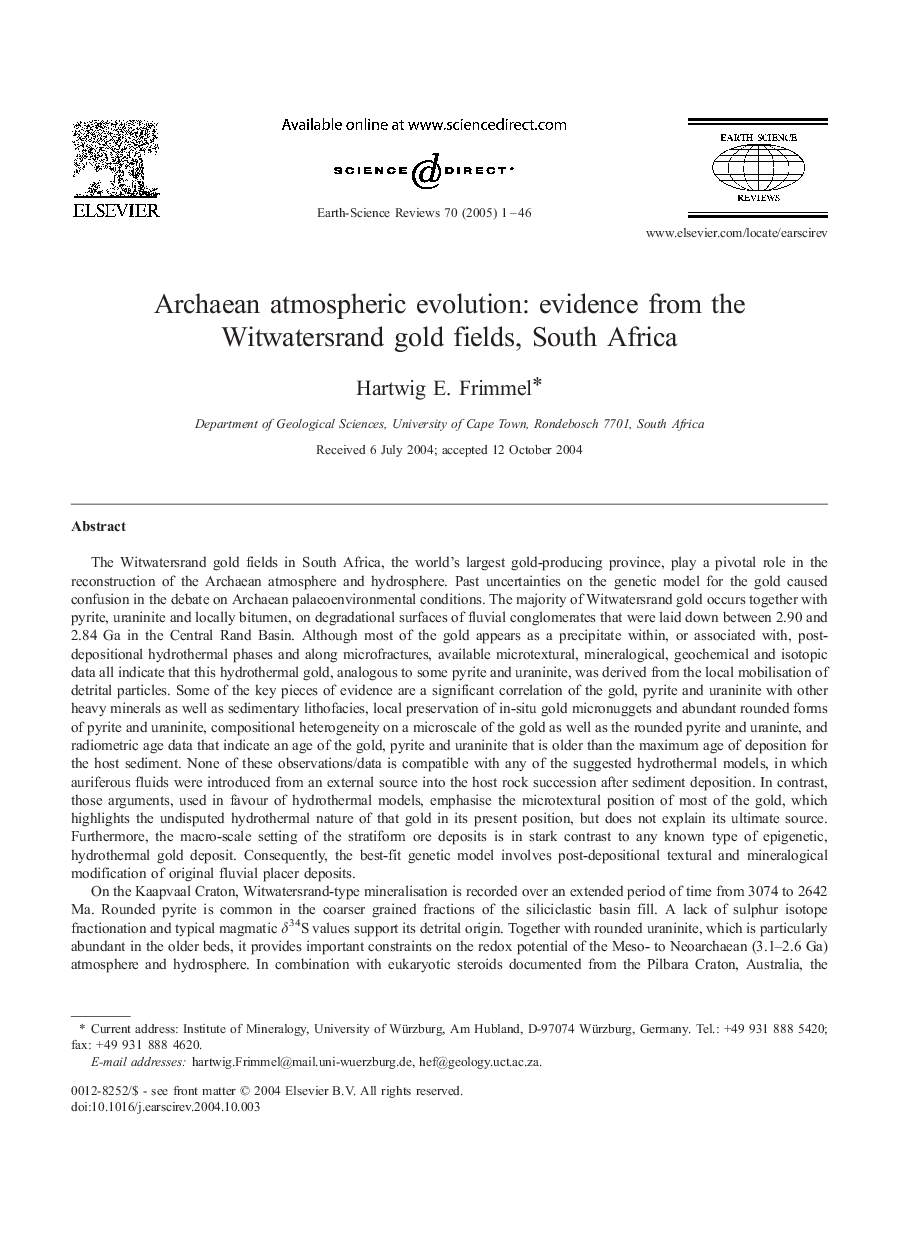| Article ID | Journal | Published Year | Pages | File Type |
|---|---|---|---|---|
| 9534306 | Earth-Science Reviews | 2005 | 46 Pages |
Abstract
On the Kaapvaal Craton, Witwatersrand-type mineralisation is recorded over an extended period of time from 3074 to 2642 Ma. Rounded pyrite is common in the coarser grained fractions of the siliciclastic basin fill. A lack of sulphur isotope fractionation and typical magmatic δ34S values support its detrital origin. Together with rounded uraninite, which is particularly abundant in the older beds, it provides important constraints on the redox potential of the Meso- to Neoarchaean (3.1-2.6 Ga) atmosphere and hydrosphere. In combination with eukaryotic steroids documented from the Pilbara Craton, Australia, the ambient Neoarchaean oxygen fugacity is calculated as having been approximately 10â3, in equilibrium with a relatively acidic hydrosphere (pH=6). This is in agreement with the preservation of mass-independent S isotope fractionation, which provides independent support for an anoxic atmosphere and which has so far been recorded predominantly from sediments older than 2.3 Ga. An acidic meteoric palaeoenvironment is supported by intense chemical weathering below erosional unconformity surfaces in the Witwatersrand Basin. In contrast to the pyrite-bearing fluvial and near-shore shallow marine deposits, marine shale deposits contain magnetite. This supports the postulated reducing environment but also highlights total sulphur concentrations in the ancient ocean that were orders of magnitude lower than in modern ocean water.
Keywords
Related Topics
Physical Sciences and Engineering
Earth and Planetary Sciences
Geology
Authors
Hartwig E. Frimmel,
